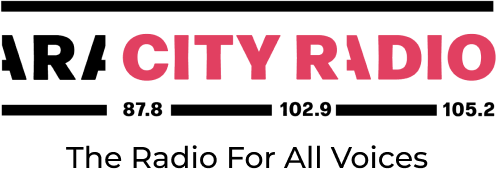Although the sky is grey today, Luxembourg is definitely rainbow couloured this week. Pride week is taking place and on Local Matters, we check out a part of the program. We went to the commemoration ceremony at Place de la Resistance in Esch, the most serious part of the week, to talk about LGBTIQ+ rights. We discovered Queer Arts at last weekend’s festival. You can listen to these pieces at Aracityradio.com. And for today, we had a look at the exhibition about the history of the LGBTIQ+ community in Luxembourg, exposed in Bâtiment4 until the end of the week. Drag Queen Séraphine Mirage gave me a tour of the exhibition and I learned that lawmakers were quite progressive when Napoleon was leading France. That’s where the exhibition starts. Séraphine Mirage starts her tour in 1794. “Very interesting year. Here in Lux we have the code penal from France. There was a law against homosexuality that was banned in 1794. Because there was beneath Napoleon a high graded person who was homosexual and he made sure that nothing against homosexuals was in the law. That’s why they changed the law.” More than 200 years ago, lawmakers decided that homosexual relations were not illegal anymore.
This achievement was reversed once Germany’s national socialists came to power in Luxembourg. “In that time, the paragraph 175, which came from the German law book, was again the law that same sex relationships aren’t allowed anymore.” During the Nazi regime, several gay people from Luxembourg were sent to the concentration camps. And even afterwards, the situation did not go back to what it was before. What was so far just an imported article of the German criminal code, in 1971 became an original Luxembourg law. Homosexual actions were forbidden by the article 372bis.
But what happens in the world, does not go unnoticed, not even in Luxembourg at the time. In the 1980s along with the worldwide movements for women’s rights, a Lesbian movement evolved in Luxembourg who raised their voices against this article. Several groups joined their efforts. These movements went on. “In the 80s and 90s a lot was happening. Several people from the groups created illegal radio stations and produced gay radio shows. They talked about topics which matter to the LGBTIQ+ community, about HIV, about how to have sex, stories about coming out. Everything which could interest a queer public.” The movements moved on, more groups joined the fight for LGBTIQ rights and the community has grown. In 1996, Rosa Lëtzebuerg was founded. They organized the very first Pride in 1999. It wasn’t called Pride yet. The name they chose Gay Mat is a wordplay. “Géi mat” in Luxembourgish means come with us, march with us, stand up for us.
In 2002, the information centre Cigale was opened. And two years later, parliament voted in favor of same-sax civil unions. For Rosa Lëtzebuerg this was not enough. “Two of our board members created the initiative Och fir eis (for us too), collected signatures for the marriage for everyone”, Séraphine Mirage says.
The exhibition shows a few relicts of Luxembourg’s rainbow history. The Queer Archive is quite a new initiative for Rosa Lëtzebuerg. Only a few people donated their objects so far, among them Jean-Marie Gonner, member of the Luxembourg drag group the Fada’s Family.
The NGO Rosa Lëtzebuerg, a few years ago, started to set up a queer archive. The archive is work in progress and shall become a collection of all history and historical objects that are relevant to the LGBTIQ scene in Luxembourg.
